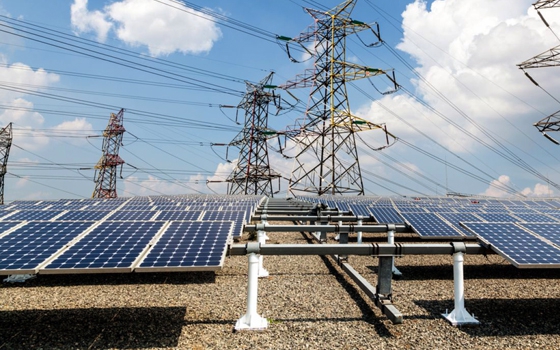Qatar plans to build around 1,000 megawatts of solar power generating capacity to diversify its energy mix away from hydrocarbons, the general manager of the state utility said.
Qatar Electricity and Water Company said in late December it would hold 60 percent of a new solar power joint venture with Qatar Petroleum.
The two shareholders will provide $500 million of start-up capital, Fahd al-Mohannadi told reporters on the sidelines of QEWC's annual shareholder meeting.
International companies will be invited to back 40 percent of each project through a competitive tender process, Mohannadi said.
"We decided to do it based on the fact that producing power from solar is cheaper than buying gas from the international market," Mohannadi said. Qatar is the world's largest exporter of liquefied natural gas.
He did not say when it would reach 1,000 MW of generating capacity. Abdulsattar al-Rasheed, business development director at QEWC, said setting up the joint venture should be completed around the end of this year or early in 2017.
There is little commercial generation of solar power in the Gulf, but oil-exporting countries around the region are starting to develop it, citing environmental reasons as well as a desire to conserve oil and gas reserves for export in the future.
Two projects in the United Arab Emirates are expected to be tendered this year which would create 1,150 MW when fully operational. Saudi Arabia has plans for both small solar schemes and power plants in which a solar component is combined with a fossil fuel element.
Mohannadi said solar would be a key part of Qatar's future energy mix, since both coal and wind power had been ruled out and Qatar's land mass was too small to consider nuclear power.
DEMAND
Peak demand for both electricity and water was expected to grow at 6 to 8 percent this year, from last year's daily highs of around 7,000 MW and 330 million gallons of water, Mohannadi said.
However, the country has plenty of spare capacity and more coming online in the next two years, which will take generating capacity to 11,000 MW of electricity and 400 million gallons of water by the start of 2018.
The first phase of the Ras Abu Fontas A3 water plant expansion, built by a consortium led by Mitsubishi Corp, is due to be completed in September and will be fully operational in January 2017 when it produces 36 million gallons daily, according to a document distributed to shareholders.
The Umm Al Houl power plant, also built by Mitsubishi and with total production capacity of 2,520 MW of electricity and 136.5 million gallons, will come on line in phases between April 2017 and July 2018, the document said.
Ras Abu Fontas will cost 1.75 billion riyals ($480.6 million) and will be funded by loans from local banks, the document said. The cost of Umm Al Houl has already been disclosed at 10 billion riyals. ($1 = 3.6410 Qatar riyals)
Reuters
21 February
























































